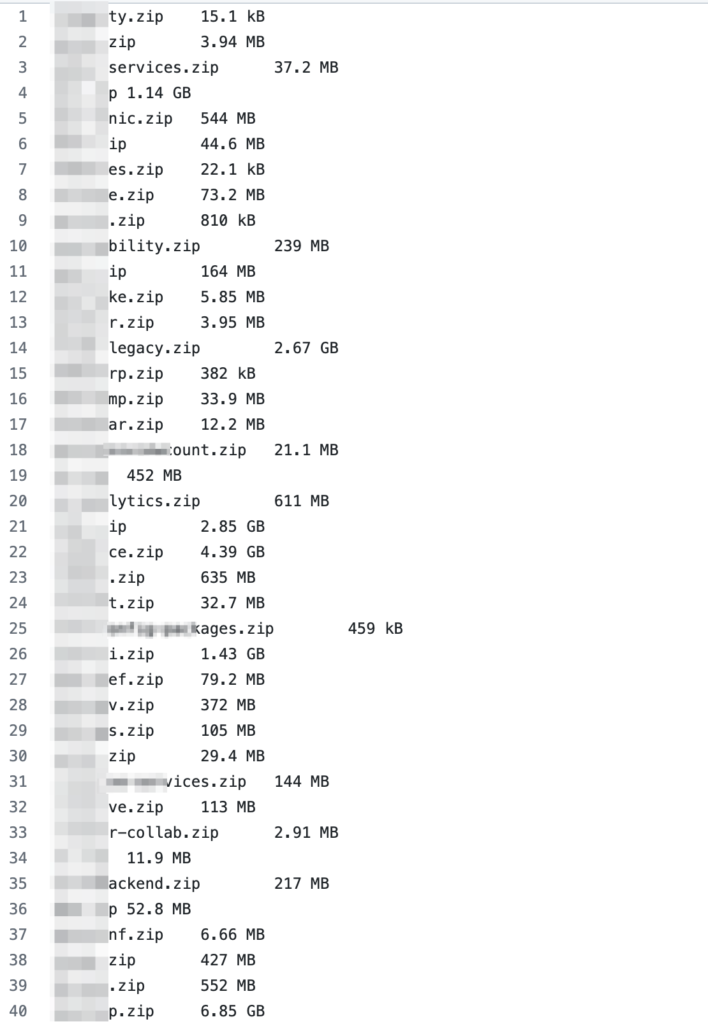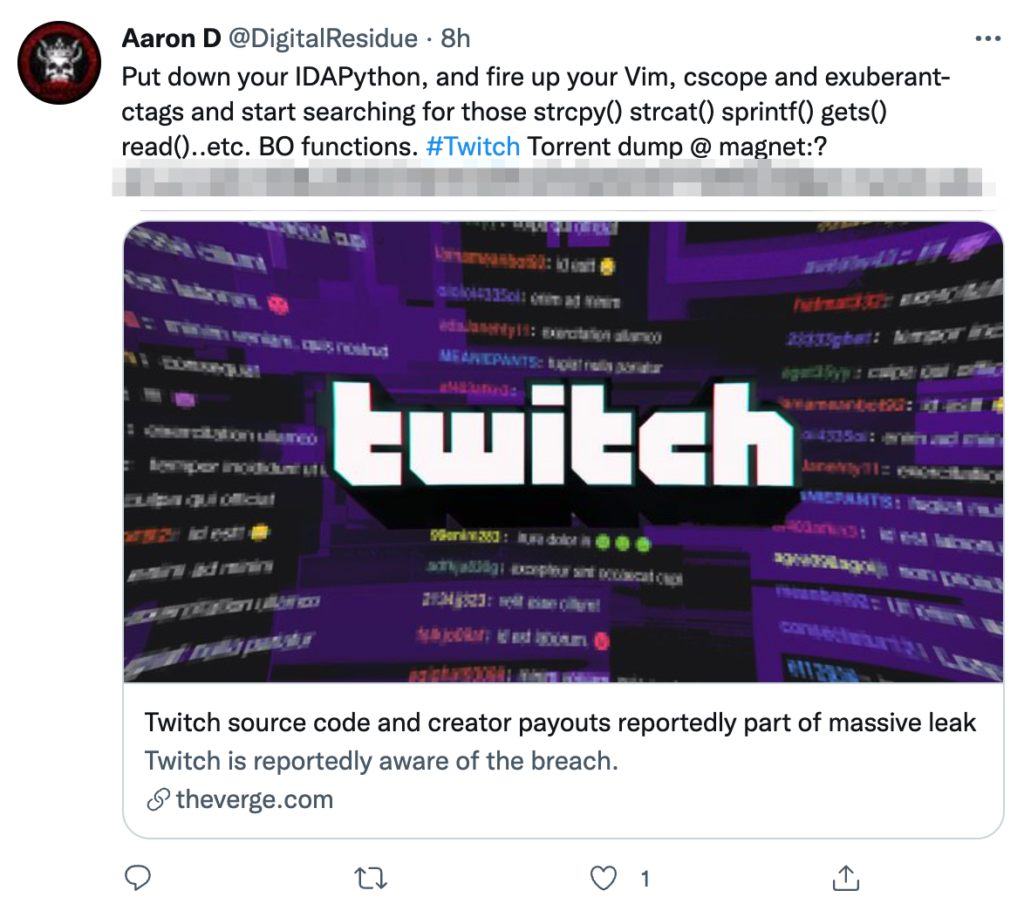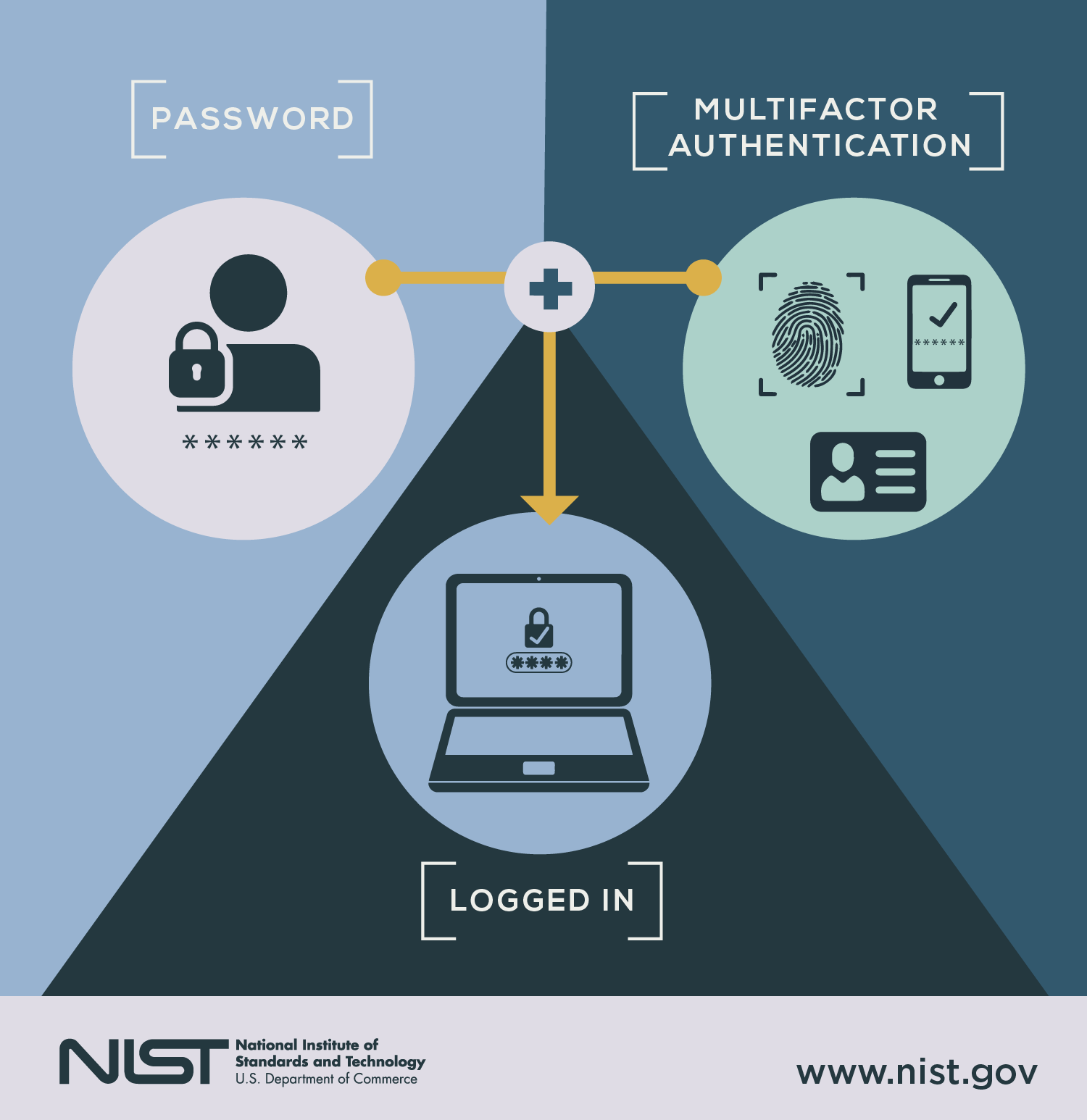Top 12 Open Source Code Security Tools
Open source software is everywhere. From your server to your fitness band. And it’s only becoming more common as over 90% of developers acknowledge using open
Amazon-owned Twitch, a massively popular video streaming service, was recently breached by hackers who leaked a massive pile of source code, data, unreleased products, payout reports, in parts. The first part weighs at about 125GB.
Twitch’s own source code is also contained within the breach. And has started circulating around 4chan, been taken down and at the moment circulates around Twitter and other social networks. It seems that the leak cannot be stopped at this stage.
The act itself, apparently was directed towards Amazon, as the original 4chan poster said.
Our analysis of the breach so far reveals a few points:
While we do not know how this happened yet, this kind of leak usually falls into one of two categories:
As the analysis of the actual source code starts being circulated throughout the Web, the risks contained within this leak are bigger than just an IP (intellectual property) leak and copyrighted material.

And this is not just Twitch. Because source code leaks commonly contain login credentials, application programming interface (API) keys, access tokens, and other confidential information, it makes a highly sought after target for hackers.
Follows below, is a play-by-play of how hackers would analyze a typical source code leak, and why it’s really not just about the source code and intellectual property being leaked.
With 125 GB of source code, hackers and attackers are now long busy in the task of deeply analyzing the source code itself.
As written by the following Twitter user, hackers are probably redirecting their efforts and focus from what ever they’re doing, and into researching the Twitch source code.

The general sense in this tweet is correct, but not necessarily the technique. While today’s modern code might not be all about finding buffer overflows (strcpy, strcat etc.), the notion is precisely the same. Find forgotten, unauthenticated endpoints, edge cases that lead to authorized use cases, and of course your typical admin/admin case. Or will it be twitch123 in this case? only time will tell.
One of the best return on investment for hackers right now will be to find secrets, keys, passwords and certificates in that code base. It’s a finding that does not require an elaborate scheme of attack — once you have a key, token or password, you’re in. And if one didn’t work – it only helps to have a pile of those, retrieved from hardcoded points in code, settings, and configuration.
Typically:

If you’d like to validate secrets you have found in your code but unsure if they work, you can use Keyscope, an open source key validation tool
The world is moving to multi-factor authentication, and specifically 2FA (two-factor authentication), typically involving authenticating with password and an SMS code or email code, or a designated authenticator app — and that’s a good thing.

Unfortunately, when you actually have the source code, you can potentially understand and control the systems that make up the authentication flow. For example, a hacker is able to access the service that is sending SMS messages through information that’s being described in the source code, that means they now control the authentication flow.
A high priority for hackers is lateral movement. That means, that instead of grabbing the obvious, that everyone are trying right now, because everyone are having the same bag of leaked data – they’ll try to get an indirect win.

An indirect win can be access to SaaS vendors. Services use external APIs, and the source code might contain all necessary details to connect to those APIs. If you can access and control such an API, you can control part of the product itself.
Another obvious indirect win is databases. While everyone are busy looking for user credentials in code, on that initial checklist for hackers is to understand if passwords are being salted, encrypted per practice – in the database. And the answer for that simply lies in the piece of code that does the authentication against the database. For hackers, this means assessing the amount of investment they need to make. Is this a brute forcing act or simply a grab and run?
We know from other incidents, that hackers also look for lateral movements into servers. If the source code contains information about connecting, authenticating and deployments – they can deploy custom scripts and processes onto production servers.

Hackers also look for anything giving them admin permissions, since it’s the most effective way to gain control, quickly. Even if best practices were kept, and source code and configuration does not contain admin credentials, there’s still artifacts to scan:
Through looking at logs that were captured in a given leak, hackers can potentially grab traffic, and within that traffic tokens and cookies used for authentication might actually reveal an admin session that was authenticated. From there all that they would need is to hijack the session (and make sure it’s still valid).
SpectralOps gives you a complete mapping of all of the above: code, logs, containers, productivity suite and more.

By following these steps and integrating a complete security solution, you can recover quickly from a source code leak. But don’t wait for a source code leak to happen. See how Spectral Ops can protect you from source code leaks and secure your DevOps pipeline today. Request a demo.

Open source software is everywhere. From your server to your fitness band. And it’s only becoming more common as over 90% of developers acknowledge using open

It’s easy to think that our code is secure. Vulnerabilities or potential exploits are often the things we think about last. Most of the time, our

Experiencing a data breach is never pleasant. Just ask any of the hundreds of businesses that suffered a data breach in the past year, exposing billions